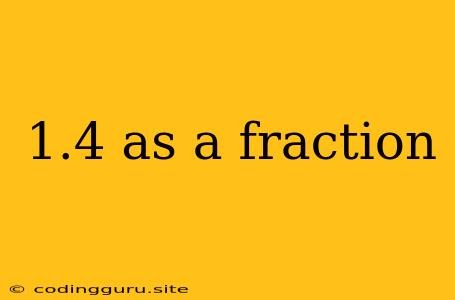Understanding 1.4 as a Fraction: A Step-by-Step Guide
Converting decimals to fractions might seem daunting at first, but it's actually a straightforward process. Let's break down how to express 1.4 as a fraction.
1. Recognize the Decimal Place Value:
The decimal 1.4 has one digit after the decimal point, which means it represents tenths. This means 1.4 is the same as "one and four-tenths."
2. Write the Decimal as a Fraction:
We can write 1.4 as the fraction 1 4/10.
3. Simplify the Fraction:
The fraction 4/10 can be simplified by dividing both the numerator and denominator by their greatest common factor, which is 2. This gives us 1 2/5.
Therefore, 1.4 as a fraction is 1 2/5.
Let's Explore Other Decimal to Fraction Conversions
Here are some additional examples:
- 0.5: This decimal represents "five-tenths" and can be written as the fraction 5/10. Simplifying this gives us 1/2.
- 2.75: This decimal represents "two and seventy-five hundredths" and can be written as the fraction 2 75/100. Simplifying this gives us 2 3/4.
Tips for Converting Decimals to Fractions:
- Identify the decimal place value. This will determine the denominator of your fraction.
- Write the decimal as a fraction. The numerator will be the digits after the decimal point. The denominator will be a power of 10 based on the number of digits after the decimal point.
- Simplify the fraction. Divide both the numerator and denominator by their greatest common factor.
Conclusion:
Converting decimals to fractions is a valuable skill in mathematics. By following these steps, you can confidently transform any decimal into its equivalent fractional form. Remember to pay attention to the decimal place value and simplify your fraction whenever possible.
